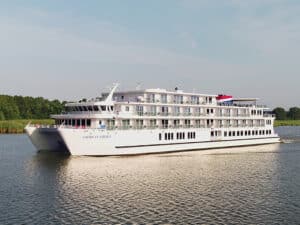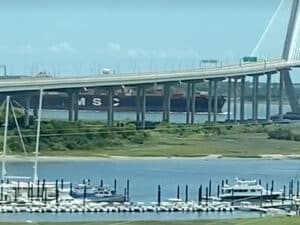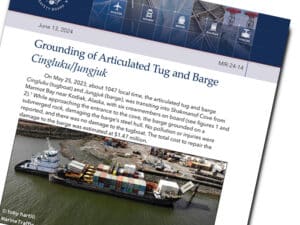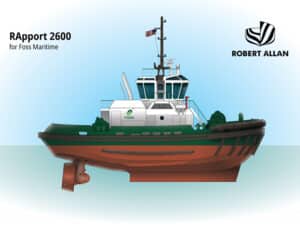
New LNG fuelled tanker first for inland waterways
Written by Marine Log Staff The inland waterways of the Netherlands are now home to the 6,100 dwt Argonon, the world’s first new LNG-fuelled tanker, following its delivery by the Dutch Shipyard Trico B.V.
The inland waterways of the Netherlands are now home to the 6,100 dwt Argonon, the world’s first new LNG-fuelled tanker, following its delivery by the Dutch Shipyard Trico B.V.
Built to Lloyd’s Register class, MT Argonon represents a significant milestone for the Deen Shipping subsidiary, Argonon Shipping B.V., in its pursuit of cleaner transport solutions for Europe. Lloyd’s Register helped the owners and regulators to identify their risks, meet regulatory requirements and overcome the technical challenges for the precedent-setting tanker.
“This has been a great project and it is a significant first,” said Piet Mast, Lloyd’s Register’s Marine Business Manager for Western Europe. “The nature of inland waterways traffic, which passes through or close to major population centers, makes LNG an attractive way to reduce harmful local emissions. We had to look carefully at the risks and worked closely with the owner and the regulators to ensure that they understood, and were comfortable with, the technical solutions that were developed.”
The dual-fuel system is designed to burn an 80/20 mixture of natural gas and diesel, reducing SOx, NOx and particulate-matter emissions, as well as reducing the greenhouse gas emissions from tank to flue. The LNG is stored in a transport tank located on deck, supplied by Cryonorm Projects, based near Amsterdam.
“The inland shipping industry, as far as we know, is the safest and cleanest mode of transport. But, to keep this lead, we have to take a big step forward in environmental performance,” said shipowner Gerard Deen. “I think that the dual-fuel principle is a way to reduce the emissions in our sector. Lloyd’s Register was very pragmatic in their approach to finding solutions to convert seagoing regulations into inland shipping rules regarding dual fuel.”
Along with Lloyd’s Register, the Netherlands Shipping Inspectorate approved the vessel’s LNG system for operation in the Netherlands and the ship has taken on its first load of LNG bunker fuel. The next step is to secure the regulatory approvals from the Central Commission for Navigating on the Rhine and the UN-ECE ADN Safety Committee, to open the way for navigation beyond the Netherlands.
“The owners are to be congratulated for being pioneers,” said Mast. “At Lloyd’s Register, we have been involved with LNG for a long time, so were able to provide support through the plan-approval and construction processes. We now look forward to supporting the ship through many years of ‘clean’ trading.”
Argonon has entered service and will start operating with gas this week following some final, main-engine tests. Propulsion power for the 110-meter-long tanker is supplied by two, dual-fuel Caterpillar DF3512 engines, each providing 1,115 KW.
The ship has the capacity to transit from Rotterdam to Basel and back without bunkering.
“We are currently providing technical and regulatory guidance for 20 confirmed or proposed inland waterway applications that intend to use LNG as fuel,” says Bas Joormann, West European Area Inland Waterway Product Manager for Lloyd’s Register. “There is a lot of interest, and for good reason. Inland waterways, like ferries in emission-control areas, are very suitable for LNG. But the regulatory regime is different. We’re helping owners and governmental bodies to identify the risks and manage them to at least the level of safety provided by the existing fuel-management and combustion requirements.”
December 15, 2011





Leave a Reply
You must be logged in to post a comment.